Quip is a new force in the electric toothbrush market which offers direct selling to customers, we can order the Quip products online and receive the replacement packs including toothbrush head battery and toothpaste in every 3 months. Quip also offers a slim and elegance design, it claims to have a better cleaning than the manual toothbrush. So, how does it compare with Philips Sonicare and Braun Oral-B? Let’s see our reviews and comparison in details here.
Who is Quip
I know what you’re thinking. Quip? Who or what is Quip? Well, the answer is a couple of things. A quip is defined in the dictionary as “a witty remark,” and it’s defined in the oral health care industry as a compact electric toothbrush created by a U.S.-based company. They sell slim and attractive electric toothbrushes that you won’t find in shops. They only sell directly to customers through their website.
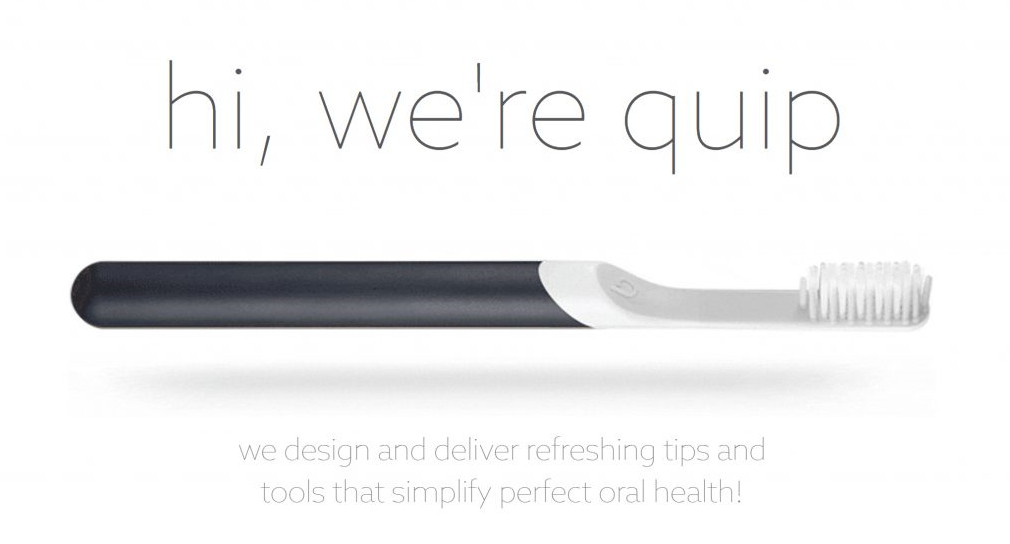
What does Quip offer?
What’s unusual about Quip in comparison with established industry stalwarts like Phillips Sonicare and Oral-B, is that this upstart is something which you subscribe to. It even feels a little strange writing that down. Subscribing to a toothbrush sounds like something that you might hear in a weird dream, but it’s actually now an established part of commercial reality. Just as you might subscribe to Netflix, you can do the same with Quip who send new heads and a replacement battery every 12 weeks when the old ones wear out. So, no, they don’t send you a new electric toothbrush handle every three months (which would be really weird) it’s just the consumables.

The initial purchase will cost about $40 and for a few dollars more (it is called the Refill Plan) you can also have toothpaste thrown in as well if you want it. If you are still wondering whether this slightly unusual approach to selling toothbrushes will catch on, then wonder no longer because it already has. In fact, they say that imitation is the highest form of flattery, and Quip’s approach has attracted plenty of flattery from other players in the industry who are adopting it too. If a competitor starts doing what you do, then you know that you are on the right track.
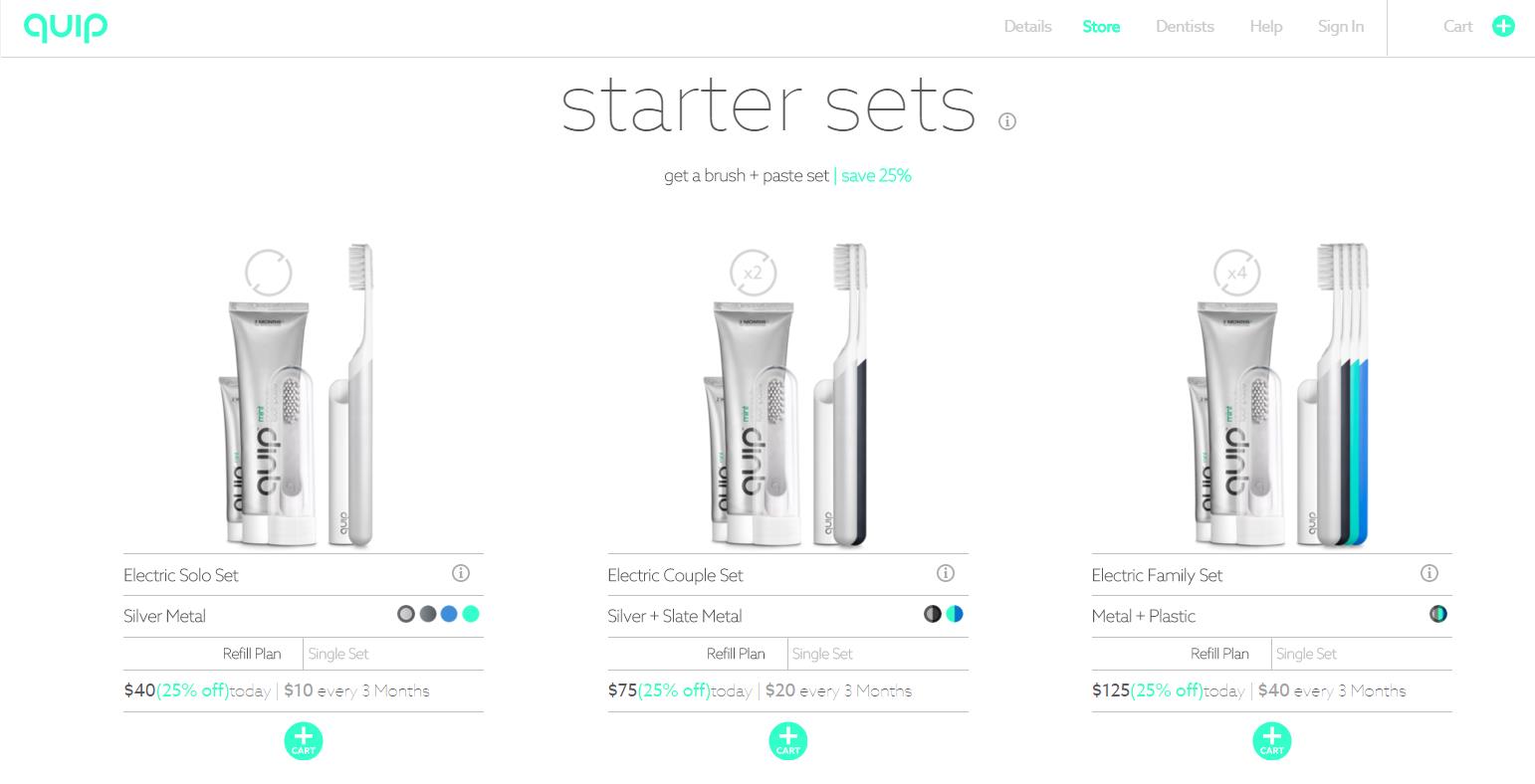
Is quip better than other mainstream electric toothbrushes?
That’s the million-dollar question. A unique way of buying something is one thing, but does it match up in performance and value for money compared to the other models on the market?
The first thing to talk about is the fact that the quip looks a bit more like a manual toothbrush than the traditional electric toothbrushes that we are used to seeing. The body is very slender and comes in a variety of colors.
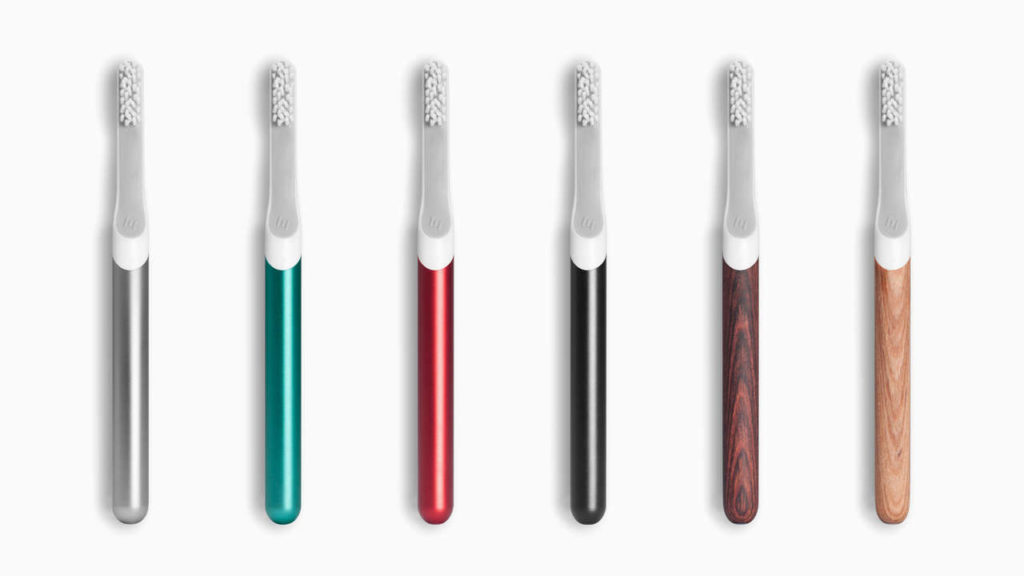
You can choose from slate, copper, silver, and gold metallic shades, or blue and green plastic shades. It fits into a toothbrush holder which you can stick to a wall or your bathroom mirror, so you don’t lose track of where it is.
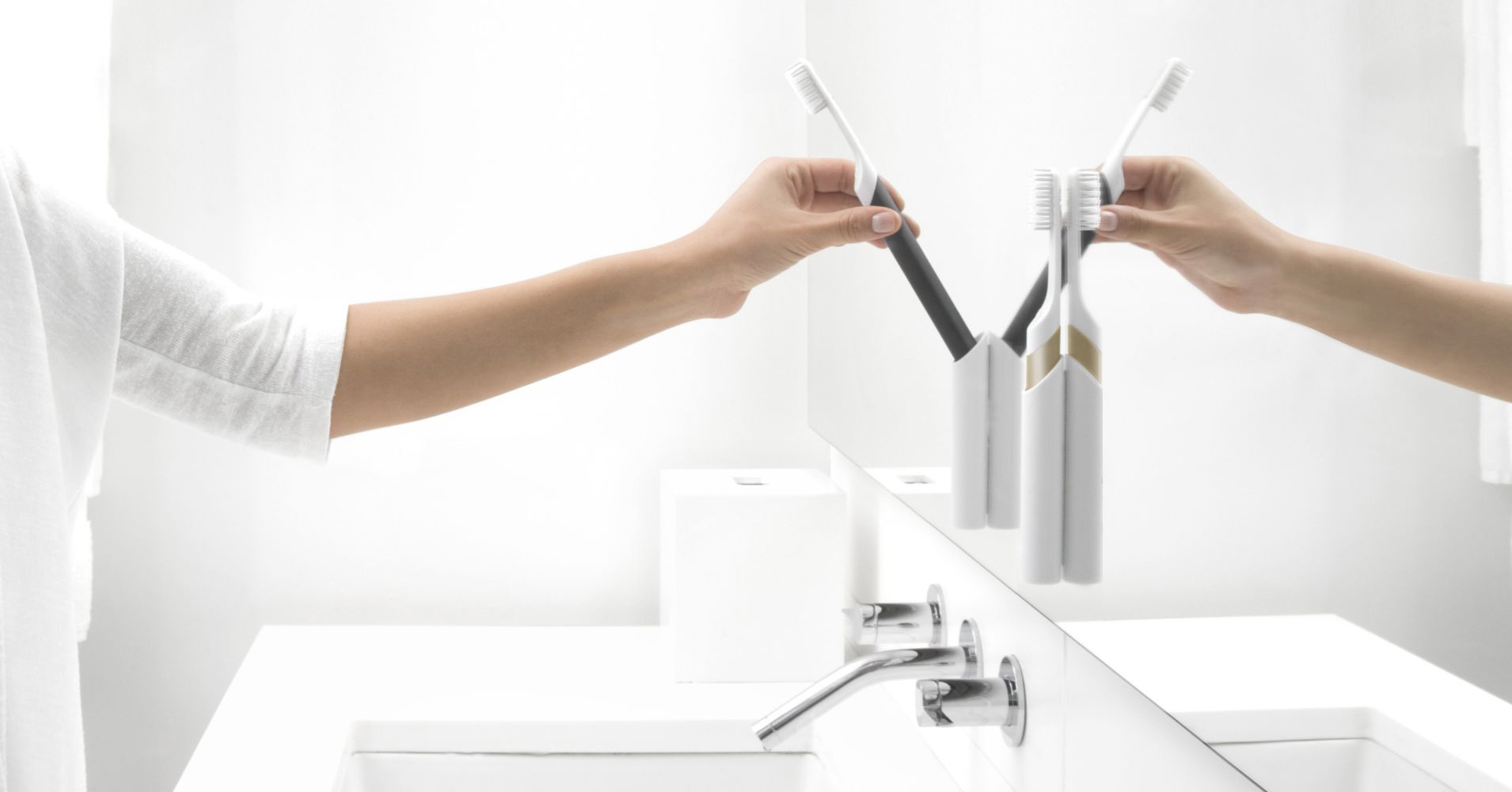
The Quip uses ultrasonic technology to clean teeth, the toothbrush head vibrates from side to side with a 15,000 movements per minute. The toothbrush head bristles are made from soft DuPont Tynex® round-tipped nylon (There are 34 tufts which contains about 1,200 nylon bristles) to keep a gentle cleaning of your teeth.

The Quip also provides the 2-minute timer and 30-second guide pulses that most other brands include with their brushes to ensure that you brush for the dentist- suggested minimum amount of time.
The actual brushing experience itself feels much closer to using a manual toothbrush, so if you’ve ever used any of the big-name electric toothbrush brands before, such as Oral B or Philips Sonicare, then you will notice that it doesn’t seem as powerful. This might be okay if you don’t enjoy the more vigorous motions of those other toothbrushes, or it might seem a little tame compared to what you are used to.
Even though that may be the case, Quip brushes have received the American Dental Association Seal of Acceptance, which means that the ADA approves the brush because it considers it to be good at removing the bacteria which causes gum disease.
What the brush doesn’t have is all of the pressure sensors, cleaning modes, Bluetooth connectivity, wireless charging, phone apps to assist you with brushing, and other features which other brands offer. you might think that this means quip isn’t concerned with your oral health care once they’ve sold you a toothbrush.
Actually, they seem keen to continue the relationship, just as they seemed keen to continue selling replacement toothbrush heads to you. Through the website, they offer monthly “Quiptips” with an online blog and a monthly newsletter called “Mouthoff.” They also have an online feature called “Dental Connect”, which gives timely checkup reminders, rewards for visiting on time and more.
Quip puts a lot of emphasis on its users establishing and maintaining good oral hygiene habits. They give replacement reminders and encourage you to brush, floss, and seeing your dentist on a regular basis, which was as good.
Let’s summarize the characteristics and see the advantages and disadvantages of Quip:
PROS
- Ultra slim and light weight design, easy to carry when travelling;
- Long battery life, keep working for 3 months with single AAA battery;
- Lower noise than most other electric toothbrushes;
- Distinctive “Refill plan” service, the plan will deliver the new brush head to you in every 3 month and you don’t have to worry about forgetting.
CONS
- Only 15,000 brush stroke per minute – much slower than most of other sonic electric toothbrushes, so it’s not a “powerful” brush to make the “super clean” for your teeth;
- Compared with the products of the same price, it lacks some proper functions like pressure sensor, battery status light.
- For the brush head, there is only one type, no other functions or even color options are available.
Quip vs. Sonicare ProtectiveClean 4100
So how does the quick compare to the Sonicare ProtectiveClean 4100? This is a popular electric toothbrush which weighs in at a suggested retail price of $69.99, but what does that mean when you are comparing it with a subscription-based brush like The Quip? Well, we estimate that you’re looking at something like $0.13-$0.17 per day with the Sonicare and about $0.09 per day with the Quip. So, the quip is cheaper, but what do you get for your money?
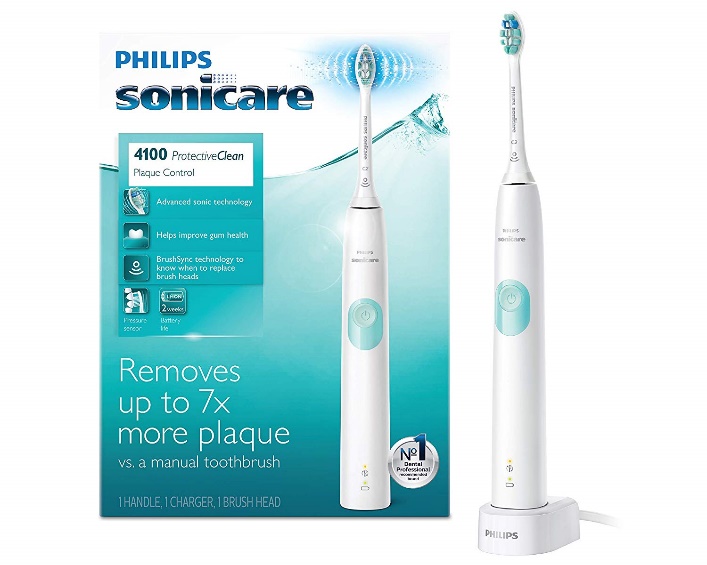
Designing
In a side by side comparison, the Quip looks better It’s got sleek good looks and an elegant simplicity about it. The 4100 is still good-looking though and it clearly isn’t going to be as sleek because it actually packs more power inside. The evidence of this? Sonicare brushes can move at up to 62,000 times a minute, which is double what the Quip can manage. This means that the Quip’s single AAA battery will carry on brushing for 3 months while the Sonicare will need a recharge every week or two depending on usage. This doesn’t seem like a huge problem because most people will put their brush on charge every day to keep it topped up.
So, on looks, the Quip has the Sonicare beaten. Its shiny metallic handle option looks very swish and contemporary when compared to the colored plastic of the 4100.
The Sonicare is quite slim compared to many other electric toothbrushes but happens to be wider than the Quip. While this may look nice, it may also pose difficulties for people who lack grip strength or who don’t have complete movement in their hands, and the oddly positioned power button may also prove to be tricky for those sorts of folks too. On the other hand, Sonicare 4100 has a comparatively larger handle which makes it much easier to manipulate, So, even though it isn’t super-slim, that isn’t a disadvantage in this case.
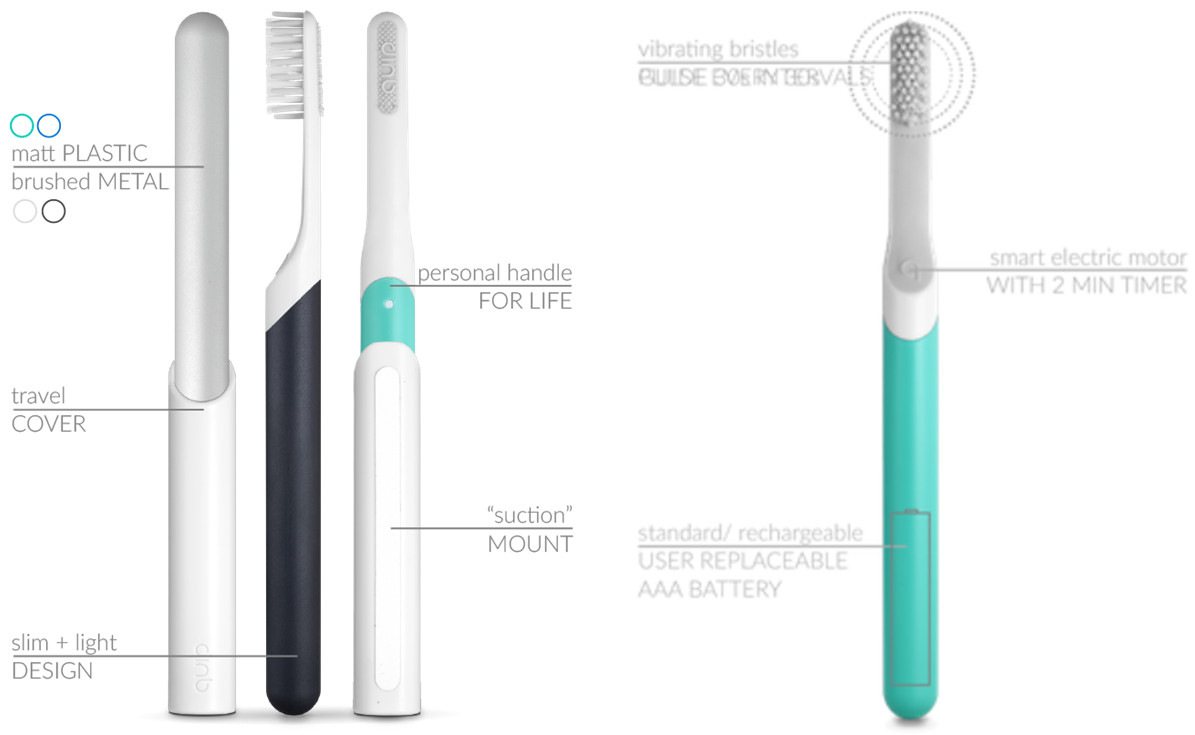
Features
Both models have an automatic power-off feature which kicks in after two minutes of cleaning. This is a useful feature. The most important thing about any electric toothbrush – or any toothbrush for that matter – is its ability to clean your teeth, and that’s something which both models do well, so in that sense, there is not much to choose between.
Where you do notice the differences when you are someone who does want all the bells and whistles that a modern brush can offer. Comparing the Quip to a DiamondClean Smart would be positively unfair because there really is no comparison. The Quip can’t match the kind of feature set that a top-notch brush will give you, and even in comparison with the 4100, you get more for your money, such as a pressure sensor to stop you from over brushing, Brush-Sync technology, with its head matching and replacement reminders. You also get the Easy Start system and lots of choice with brush heads.
Brush heads
Sonicare offers a much wider range of brush heads, While Quip only offers a single option. Quip will deliver a new one to your door, but Sonicare will just give you a gentle reminder that you need to change your brush heads with bristles that change color after 3 months. Whether this is something that you value is down to you. You may like to be reminded, it may be one less thing to have to think about, or you may be fine with buying a four or eight-pack of replacement brush heads from your supermarket or online.
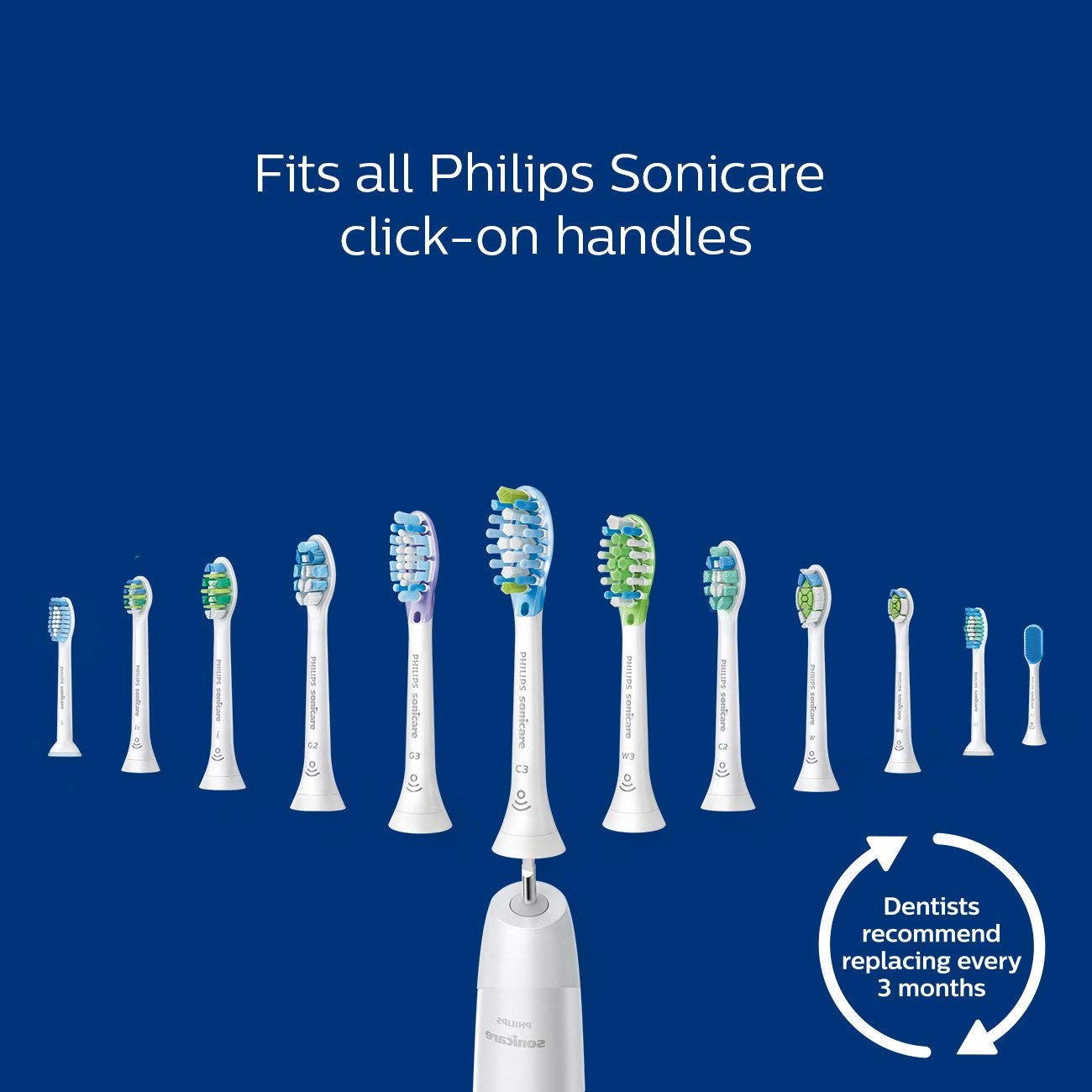
Warranties
The Sonicare ProtectiveClean 4100 comes with a two-year warranty, and if you register it soon enough after purchase then you will receive six months extra for free. The Quip Is a simpler piece of technology so it makes sense that the warranty is only for one year (although this is extended while you are a subscriber).
Cost
We have already estimated what the comparative costs are between these two electric toothbrushes, but that only holds true if you live in the USA. Until Quip establishes presences on the other continents, the cost of ownership will be higher due to postage costs and currency conversion fees.
Quip vs Oral-B Pro 3000
The Oral-B Pro 3000 is another leading competitor that Quip will be keen to displace. It’s a popular design that you can pick up pretty much anywhere, both online and probably in your local supermarket, even if you’re not in America.
Designing
The Oral-B Pro 3000 can’t really compete with the Quip’s looks. It’s not bad looking, it just isn’t great. The Quip has lots of style and that’s just the way it is!
Features
The Oral-B Pro 3000 has 3 brushing mode settings called Daily Clean, Gum Care and Sensitive.
Unlike the Sonicare, the Oral-B has differences in how fast the brush head oscillates, but each one is pretty quick. For instance, it moves at 8,800 oscillations and 40,000 pulses a second In Daily Clean mode, which is a lot more movements than the Quip’s 15,000.
The Pro 3000 has a red light to tell you when you’re pressing on too hard, but you shouldn’t really need to do that at all because it hums around your mouth getting rid of plaque and food debris. Once again, this power comes at a price though. The battery life is around 7 days in normal usage, so you do need to keep it plugged in to make sure that it’s topped up, and you’ll need to drain it completely every 6 months to make sure that the battery life is restored too.
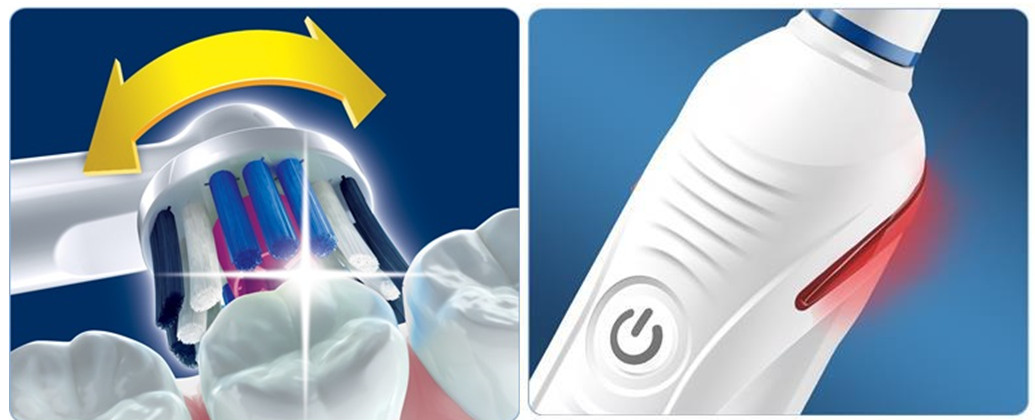
You can hook the Oral-B up to a smartphone App that tells you how long to brush for. It divides your two-minute routine up into 30-second chunks and reminds you when to move on to the next area. So, you are getting quite a lot of electric toothbrush for your money. The power it delivers can make your teeth look whiter by getting rid of stains on the surface, so it stands up very well compared to the Quip.

Brush heads
The Oral-B pro 3000 accepts all the available Oral-B brushes, so you have a choice of the CrossAction, FlossAction, Sensitive, 3-D White, Precision Clean, Tri-Zone, Ortho, Power Tip, and Dual Clean heads. These vary in shape, size, and function as you might expect, and obviously in price too. They’re not as cheap and simple as the Quip, but the options are there if you want to take advantage of them. Once again you get indicator bristles you know when to place them.
It’s worth saying that most of the brushes are round. The idea behind this is that they fit around the teeth better than a conventionally shaped brush, and it’s true that feels easier to get them all around your teeth compared to conventionally shaped brushes.
Warranties
The Oral-B warranty is for 2 years, or 3 if you register online. Again, this probably doesn’t give it an advantage over the Quip, as there’s less to go wrong with the simpler brush. Perhaps only time will tell whether this extra layer of insurance matters.
Conclusion
As with many things, you get what you pay for. If you want to pay a bit less to keep your teeth clean, then the Quip may be the option for you. It’s definitely a simpler design, and it’s slimmer and more attractive than both the Philips Sonicare and the Oral-B. It’s one step up from a plain old plastic toothbrush and subscribing is great if you don’t want to have to think about buying replacement brush heads every three months, as it’s all taken care of.
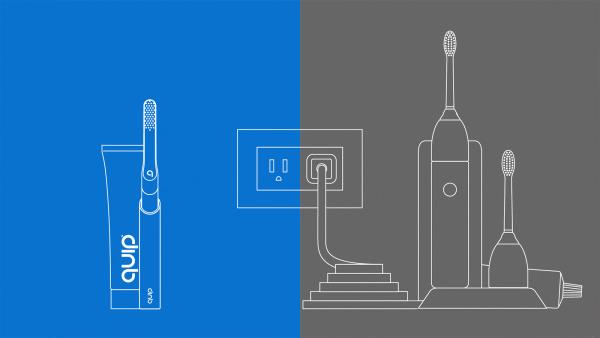
The Quip definitely looks simpler and slimmer and more attractive than both the Philips Sonicare and the Oral-B. This is an electric toothbrush with perfect portability and may be the option for you when you are traveling – you can see the brushes we recommend the most for travelers here.
It’s also the one step up from a plain old plastic toothbrush and subscribing is great if you don’t want to have to think about buying replacement brush heads every three months, as it’s all taken care of.
But if you want all of the advantages that people buy an electric toothbrush for in the first place then you might be better off sticking with the tried and tested offerings from Sonicare and Oral-B. The Oral-B Pro 3000 offers slightly better features than the Sonicare ProtectiveClean 4100, but either of them will do a great job of getting your teeth clean.